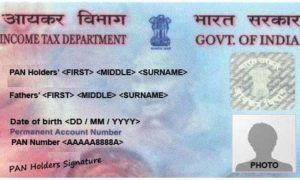As per the provisions u/s 80EEA, the value of the house property should not exceed Rs 45 lakh and the carpet area should not exceed 60 square meter in metropolitan cities and 90 square meter in other areas.
At the time of filing his income tax return, a taxpayer was unsure if he would get the additional deduction of Rs 1.5 lakh on home loan interest u/s 80EEA of the Income Tax Act along with Rs 2 lakh deduction available to normal home buyers u/s 24(b). This is because in his property document the carpet area of the house that he had purchased was not mentioned.
Read More: Secure your spouse’s future with THIS scheme, here’s how to get Rs 44,793 monthly pension
However, as per the provisions u/s 80EEA, the value of the house property should not exceed Rs 45 lakh and the carpet area of the house property should not exceed 60 square meter (645 sq ft) in metropolitan cities of Bengaluru, Chennai, Delhi NCR (limited to Delhi, Noida, Greater Noida, Ghaziabad, Gurgaon, Faridabad), Hyderabad, Kolkata and Mumbai (whole of Mumbai Metropolitan Region), while in any other cities or towns, the carpet area should not exceed 90 square meter (968 sq ft).
So, the taxpayer was in a dilemma if he would get the benefit of Rs 3.5 lakh (including Rs 1.5 lakh u/s 80EEA), or only up to Rs 2 lakh u/s 24(b)?
“It’s a rare chance that the covered area is not mentioned in the property document however if still this is the case then during the technical verification of the property a technical report is generated and submitted to the bank where key details of the property such as area, location, valuation etc. is submitted. That report can help the borrower to get additional tax benefits of affordable housing,” said Atul Monga- CEO and Co founder, Basic Home loan.
However, according to Dr. Suresh Surana, Founder, RSM India, the covered area of the residential flat is not relevant for claiming deduction u/s 80EEA.
“Section 80EEA of the Income Tax Act, 1961 (the IT Act) provides an individual deduction up to Rs 1,50,000 with respect to interest payable on loan taken by an individual from any financial institution for the purpose of acquisition of a residential house property,” said Dr. Surana.
Dr. Surana also pointed out that a taxpayer may get the additional tax benefit u/s 80EEA, provided the following conditions are satisfied:
(i) the loan has been sanctioned by the financial institution during the period beginning on the 1st April, 2019 and 31st March 2022
(ii) the stamp duty value of residential house property does not exceed Rs 45 lakh;
(iii) the taxpayer does not own any residential house property on the date of sanction of loan.
“In this respect it is notable that, under section 24(b) there is a provision for claiming interest deduction upto Rs 1.5 lakh as well. As such, in a situation where, say the individual is paying an interest on a housing loan of say Rs 3.5 lakh per annum, then he can claim deduction of Rs 1.5 lakh under section 80EEA and Rs 2 lakh under section 24(b),” said Dr. Surana.





































